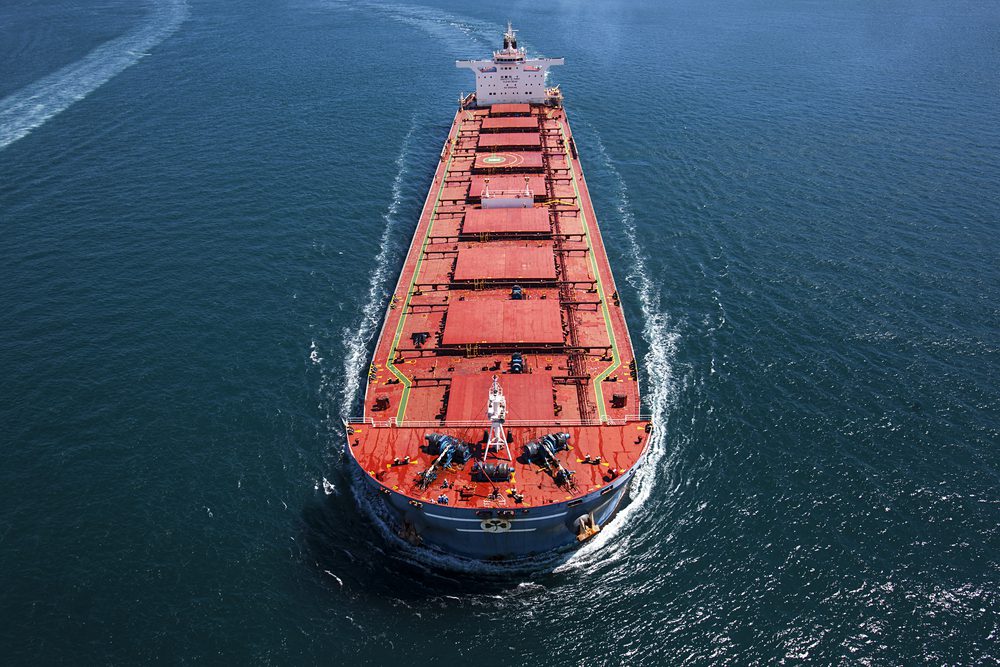Baltic Dry Index (BDI) is a shipping and trading index created by the Baltic Exchange in London. It measures changes in the cost of transporting various raw materials, such as coal and steel.
Exchange members communicate directly with shipping brokers to estimate price levels for given shipping routes, the product to be transported and the time to delivery or speed. The Baltic Dry Index is a composite of three sub-indices that measure different sizes of dry bulk carriers and merchant vessels: Capesize, Panamax and Supramax.

Key Points
- The Baltic Dry Index (BDI) is an index of average prices paid for the transportation of bulk materials on more than 20 routes.
- BDI is often considered as a leading indicator of economic activity, because changes in the index reflects supply and demand for important materials used in production.
- The index can have a high level of volatility because the supply of large carriers is usually small, with long lead times and high production costs.
How the Baltic Dry Index works
The Baltic Dry Index is calculated by evaluating multiple delivery rates on more than 20 routes for each of the vessels that make up the BDI. An analysis of multiple geographic delivery routes for each index gives depth to the composite index measurement. Members contact shippers around the world to find out prices and then calculate the average. The Baltic Dry Index is released by the Baltic Exchange on a daily basis.
Changes in the Baltic Dry Index can give investors insight into global supply and demand trends. Many believe that the rise or fall of the index is a leading indicator of future economic growth. It is based on raw materials because demand for them bodes well for the future. These materials are bought to build and maintain buildings and infrastructure, not when buyers either have a surplus of materials or are no longer constructing buildings or producing products.
The Baltic Exchange also operates as a creator of derivatives markets, including types of forward financial contracts known as forward freight agreements.

Dimensions of BDI vessels
BDI measures shipments on a variety of vessel sizes. Capesize boats are the largest vessels in BDI with a deadweight of 100,000 or more. The average Capesize ship size is 156,000 DWT. This category can also include large vessels of 400,000 DWT. Capesize-type ships mostly carry coal and iron ore on long-haul routes and are sometimes used to carry grain. They are too large to cross the Panama Canal.
Panamax vessels have a deadweight of 60,000 to 80,000 tons and are used mostly for shipping coal, grain, and small bulk commodities such as sugar and cement. Panamax cargo ships require specialized equipment for loading and unloading. They have a hard time squeezing through the Panama Canal.
The smallest vessels included in the BDI are the Supramaxes, also called Handymaxes. These ships have cargo capacities ranging from 45,000 to 59,999 DWT. Sometimes they come in like this. Although they are close in size to Panamaxes, Supramaxes usually have special loading and unloading equipment and are used in ports where Panamaxes cannot.
Type of bulk cargo
Dry bulk commodities generally fall into two categories: major and minor. Some examples of major bulk commodities include iron ore, coal, and grain. These large shipments account for nearly two-thirds of the world’s bulk cargo trade. Minor bulk commodities include steel products, sugar, and cement and cover the remaining one-third of global bulk trade.
Coal, along with iron ore, is one of the world’s most traded bulk commodities by volume. The countries most involved in importing coal to meet their primary energy and power needs are India, China, and Japan. Grain is another important cargo in terms of maritime bulk trade and accounts for a significant portion of total bulk trade worldwide.

A real world example
The index can fall if the goods shipped are crude, prepared for production, which is usually an area of minimal speculation. The index can have a high level of volatility if global demand rises or falls suddenly because the supply of large carriers tends to be small, with long lead times and high production costs .
Stock prices go up when the global market is healthy and rising, and tend to go down when it stops or falls. The index is fairly consistent because it depends on black and white supply and demand factors without much influence such as unemployment and inflation.
The BDI somewhat predicted the 2008 recession, when prices experienced a sharp drop. According to Hellenic Shipping News, as of February 2019, the index was down more than 47% from a year ago , the lowest level in nearly 24 months.
